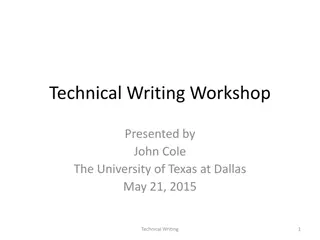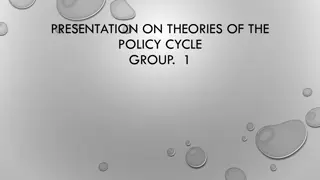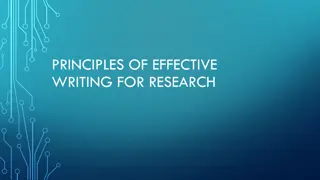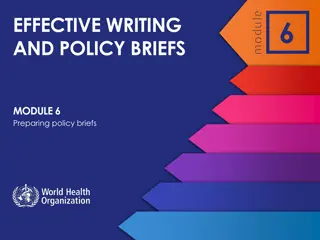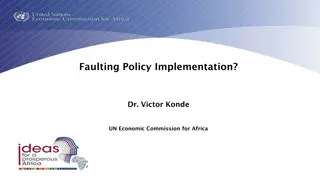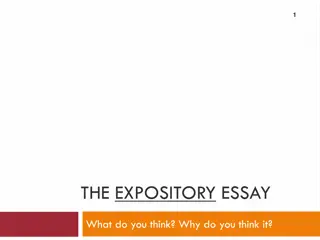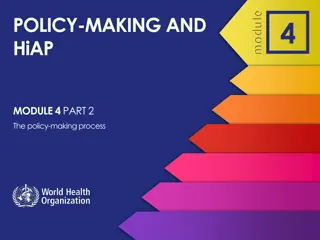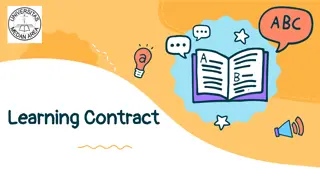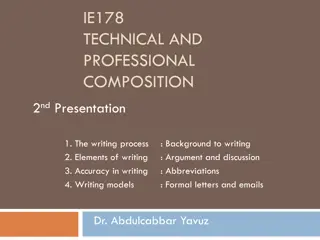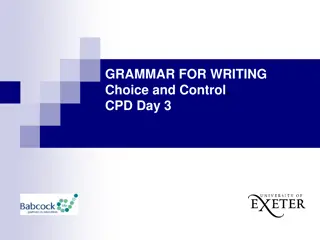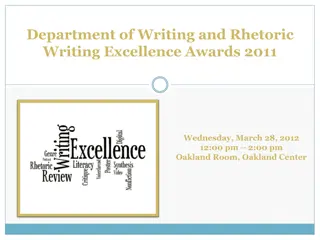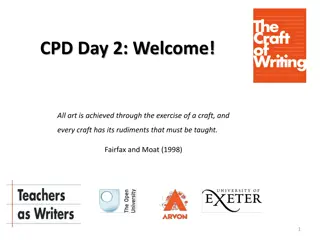Understanding the Policy Writing Process
The policy writing process involves strategic communication, understanding readers' needs, and effective writing techniques. It begins with preparation, where context and audience are assessed. Composition follows with drafting and synthesizing material, leading to revisions and finalization. Emphasizing critical thinking and integrity, this process aims to deliver impactful policy stories backed by rigorous analysis.
Download Presentation

Please find below an Image/Link to download the presentation.
The content on the website is provided AS IS for your information and personal use only. It may not be sold, licensed, or shared on other websites without obtaining consent from the author. Download presentation by click this link. If you encounter any issues during the download, it is possible that the publisher has removed the file from their server.
E N D
Presentation Transcript
The Policy Writing Process The Writing Center
The ability to think critically about context, purpose, genre, and audience, and to communicate strategically to address that specific situation. Strategic communication requires a set of specific and complex skills that everyone can develop and improve, and is integral to powerful, ethical, and innovative leadership. STRATEGIC COMMUNICATION: WHAT IS IT?
Our purpose is to understand what our readers need to know to fulfill their mission or achieve their goals and then to provide them with interesting policy stories, based on persuasive evidence and rigorous data analysis and told with integrity to the facts (Chrisinger 6). POLICY WRITING: WHAT IS IT?
Understanding Writing as a (Messy) Process Almost all good writing begins with terrible first efforts. You need to start somewhere. Start by getting something - - anything -- down on paper. A friend of mine says that the first draft is the down draft -- you just get it down. The second draft is the up draft -- you fix it up. You try to say what you have to say more accurately. And the third draft is the dental draft, where you check every tooth, to see if it's loose or cramped or decayed, or even, God help us, healthy. Anne Lamott, Shitty First Drafts
Assessing the Context The Writing Process PHASE I: PREPARATION Considering the audience Genre identification Understanding parameters and expectations Prewriting Brainstorming Freewriting Mind mapping Topic Identification Research question The stakes Line of inquiry Research Finding sources Considering multiple perspectives Creating a bibliography Planning Outlining
The Writing Process PHASE II: COMPOSITION Drafting Synthesizing source material Composing the central claim Composing the introduction, body, and conclusion Articulating and addressing counterarguments Composing the Executive Summary Feedback Peer Review
Revisions The Writing Process PHASE III: FINALIZING Clarifying and accepting feedback Revision planning Making substantive changes Editing Correcting the formatting Correcting mechanics and word choice Editing for concision and tone Proofreading Editing for typos Submission/Publication
Finalizing Revision Editing Proofreading SUBSTANTIVE CHANGES LOWER-ORDER CHANGES FINAL CHECK Answer/solution Format Typos Structure Style/Tone Evidence Word choice Argumentation Concision Grammatical Conventions
LaMott, Anne. Bird by Bird. Anchor Books, 1995. WORKS CITED








